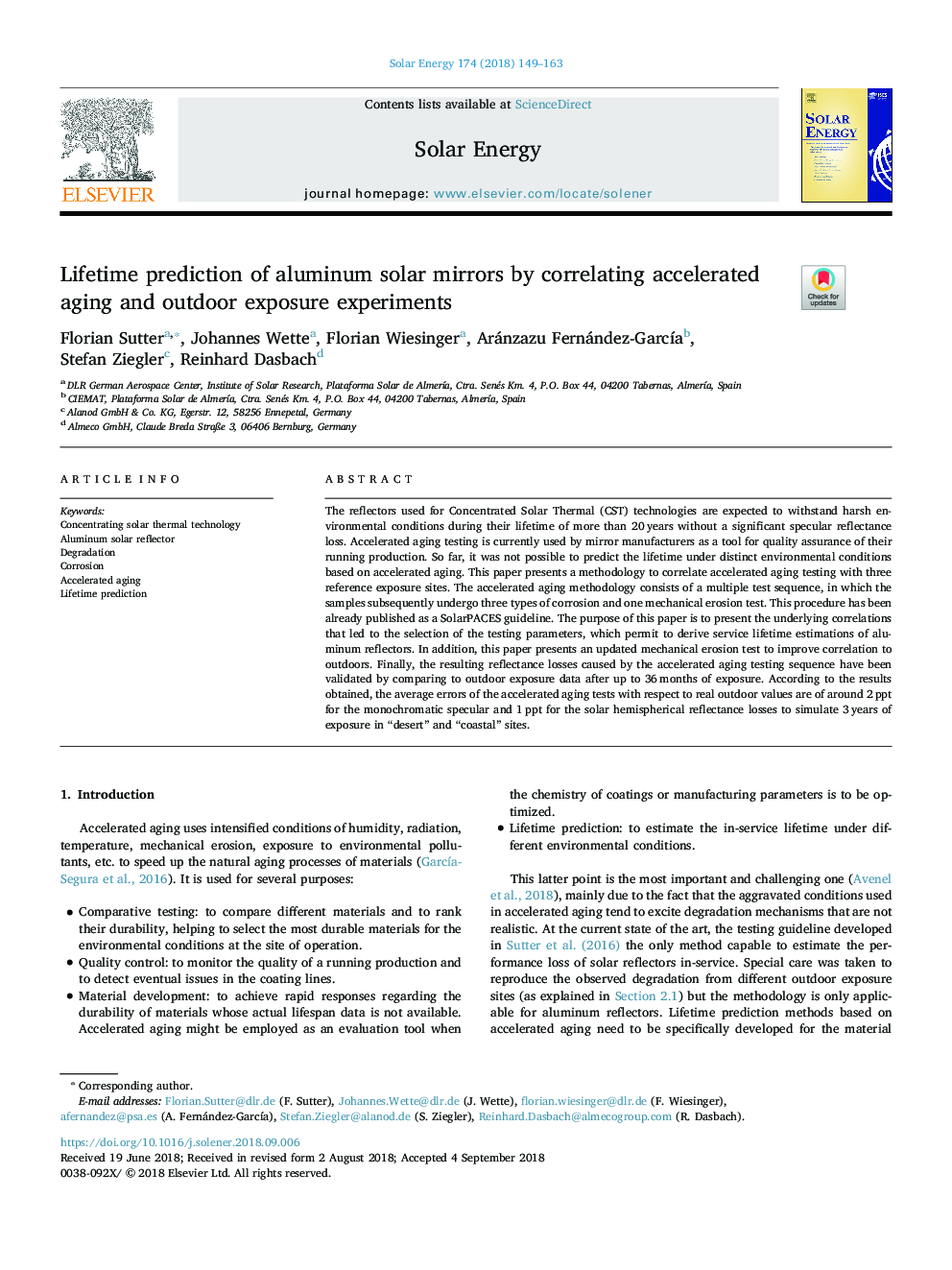| Article ID | Journal | Published Year | Pages | File Type |
|---|---|---|---|---|
| 10141930 | Solar Energy | 2018 | 15 Pages |
Abstract
The reflectors used for Concentrated Solar Thermal (CST) technologies are expected to withstand harsh environmental conditions during their lifetime of more than 20â¯years without a significant specular reflectance loss. Accelerated aging testing is currently used by mirror manufacturers as a tool for quality assurance of their running production. So far, it was not possible to predict the lifetime under distinct environmental conditions based on accelerated aging. This paper presents a methodology to correlate accelerated aging testing with three reference exposure sites. The accelerated aging methodology consists of a multiple test sequence, in which the samples subsequently undergo three types of corrosion and one mechanical erosion test. This procedure has been already published as a SolarPACES guideline. The purpose of this paper is to present the underlying correlations that led to the selection of the testing parameters, which permit to derive service lifetime estimations of aluminum reflectors. In addition, this paper presents an updated mechanical erosion test to improve correlation to outdoors. Finally, the resulting reflectance losses caused by the accelerated aging testing sequence have been validated by comparing to outdoor exposure data after up to 36â¯months of exposure. According to the results obtained, the average errors of the accelerated aging tests with respect to real outdoor values are of around 2â¯ppt for the monochromatic specular and 1â¯ppt for the solar hemispherical reflectance losses to simulate 3â¯years of exposure in “desert” and “coastal” sites.
Related Topics
Physical Sciences and Engineering
Energy
Renewable Energy, Sustainability and the Environment
Authors
Florian Sutter, Johannes Wette, Florian Wiesinger, Aránzazu Fernández-GarcÃa, Stefan Ziegler, Reinhard Dasbach,
